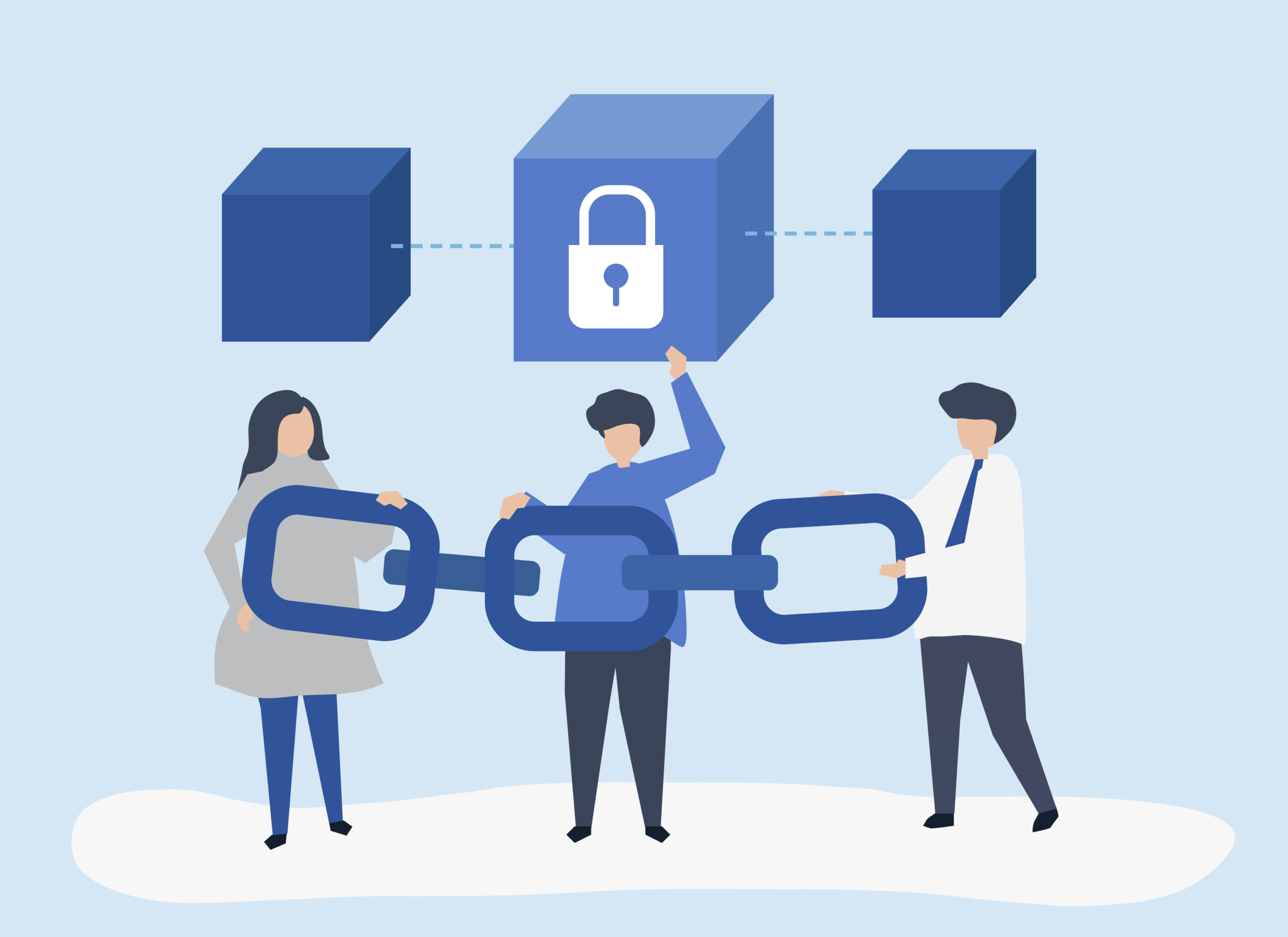
Introduction
In the dark early days of computing, the idea of connecting computers together was nothing more than a dream. However, as the computing industry grew, so did the need for a way to connect computers together in a way that would allow them to communicate with each other. This need led to the creation of Arpanet, the first-ever computer network. It is also the precursor to what we now know as the Internet.

The Arpanet
Arpanet was created in the late 1960s as a way for researchers to communicate with each other across different locations. However, Arpanet was not the internet as we know it today. Instead, it was a closed network that could only be accessed by a select few researchers.
In 1974, Robert Kahn and Vint Cerf, two Arpanet researchers solved the biggest problem of that time of making two networks communicate with each other. This solution was a set of guidelines that led to the emergence of ‘internetworking’ and with their invention, we saw TCP/IP, or Transmission Control Protocol and Internet Protocol presented before the world for the very first time.
Fast forward 15 years to the year 1989, and we have the birth of the World Wide Web, thanks to the work of British computer scientist Tim Berners-Lee. The World Wide Web is often confused with the Internet, but it is simply a way of accessing information over the Internet. Before the World Wide Web, the Internet was primarily used for email, file transfers, and remote access to computers. The World Wide Web changed everything by making it possible for anyone with an internet connection to access information from anywhere in the world.
The early days of the World Wide Web were very different from what we know today. Join me on a journey through the history of the Internet, as we explore the evolution of the World Wide Web from its humble beginnings in Web 1.0 to the revolutionary changes of Web 3.0.
Web1.0: Static Information-Only Websites

Web 1.0, also known as the “read-only” web, refers to the early days of the internet when most websites were static, information-only sites that were difficult to navigate and lacked any kind of interactivity. Web 1.0 was primarily focused on delivering information to users in a one-way manner, without any form of user interaction or collaboration.
Key Features of Web 1.0
1. Web 1.0 featured static web pages with no user-generated content.
2. It was primarily based on HTML (Hypertext Markup Language) and lacked multimedia support.
3. The web was primarily used for browsing and retrieving information.
4. Interactivity was limited, and communication between website owners and users was difficult.
5. E-commerce was not yet developed, and online transactions were not possible.
Web2.0: Interactive Social Media-Driven Websites
Web 2.0, also known as the “read-write” web, emerged in the mid-2000s and brought about a dramatic shift from the static, information-only websites of Web 1.0 to interactive, social media-driven websites that were easy to use and allowed for greater communication and collaboration. Web 2.0 was characterized by user-generated content, social media platforms, and web applications that enabled greater interactivity and collaboration.
Key Features of Web 2.0
1. User-generated content, with sites like Wikipedia and YouTube relying on contributions from users
2. Social media platforms, such as Facebook and Twitter, that enabled greater communication and collaboration
3. Web applications that enabled greater interactivity and collaboration, such as Google Docs and Dropbox
4. More advanced search engines such as Google and Yahoo made it easier to find information on the web
5. E-commerce platforms such as Amazon and eBay enabled online shopping and made it easier to purchase goods and services from anywhere in the world.
Web3.0: Decentralized Peer-to-Peer Network

Web 3.0, also known as the “decentralized” web, is the latest evolution of the internet and seeks to eliminate the centralized intermediaries that currently govern many aspects of the internet, from social media platforms to financial institutions. Instead, Web 3.0 enables a peer-to-peer network that allows users to interact directly with one another in a trustless, decentralized manner.
Key Features of Web 3.0
1. Decentralized network, powered by blockchain technology, that enables secure, transparent, and decentralized transactions without the need for intermediaries
2. Enables new business models and applications, such as decentralized finance and peer-to-peer marketplaces, that were previously impossible under the centralized Web 2.0 model
3. Offers greater privacy and security, as data is not stored in centralized servers and is encrypted and secured through cryptography.
4. Utilizes smart contracts that enable self-executing contracts with the terms of the agreement between buyer and seller being directly written into lines of code
5. Enables the creation of decentralized autonomous organizations (DAOs) that allow for decentralized decision-making and ownership structures.
It can be used for:
- Metaverses: A 3D-rendered, boundless, virtual world.
- Blockchain games: They allow users to have actual ownership of in-game resources, following the principles of NFTs.
- Privacy and digital infrastructure: This use includes zero-knowledge proofs and more secure personal information.
- Decentralized finance. This use includes payment Blockchains, peer-to-peer digital financial transactions, smart contracts, and cryptocurrency.
- Decentralized autonomous organizations. Community members own online communities
Uses Of Web1.0, 2.0 and 3.0
The internet has come a long way since the days of Web 1.0, which functioned primarily as a content delivery network (CDN) with static, information-only websites. Despite its limitations, Web 1.0 paved the way for the more interactive and user-driven Web 2.0, which comprises various social platforms and tools that allow users to contribute their thoughts, opinions, and experiences.
Web 2.0 has revolutionized the way we interact with the internet, giving birth to popular social media sites, blogs, podcasts, RSS feeds, and more. The end-users are not just limited to viewers but are also active participants who engage in activities such as tagging, voting, social networking, and bookmarking.
But the evolution of the internet doesn’t stop at Web 2.0. Web 3.0 represents an even more advanced iteration of the internet, building upon the foundation of its predecessors to create a more intelligent and decentralized web. With features like blockchain technology and artificial intelligence, Web 3.0 is set to transform the Internet into a more secure and efficient platform, enabling seamless transactions and more personalized experiences for its users.
The Wrap!
The evolution of the Internet has been remarkable. From its early days as a closed network for researchers to the birth of the World Wide Web and the emergence of Web1.0, Web2.0, and the latest evolution of the Internet, Web3.0. While Web1.0 was primarily focused on delivering information to users in a one-way manner, Web2.0 brought about a dramatic shift to interactive, social media-driven websites that allowed for greater communication and collaboration.
Web 3.0, on the other hand, seeks to eliminate centralized intermediaries. It enables a trustless, decentralized peer-to-peer network that enables new business models and applications. Meanwhile, we gain greater privacy and security, and the creation of decentralized autonomous organizations. The uses of Web1.0, Web2.0, and Web3.0 have changed the way we live, work, and interact with each other. Furthermore, the possibilities for the future of the Internet are endless.
Personal Note From MEXC Team
Check out our MEXC trading page and find out what we have to offer! You can learn more about cryptocurrency industry news. There are also a ton of interesting articles to get you up to speed with the crypto world. Lastly, join our MEXC Creators project and share your opinion about everything crypto! Happy trading!
Join MEXC and Get up to $10,000 Bonus!



